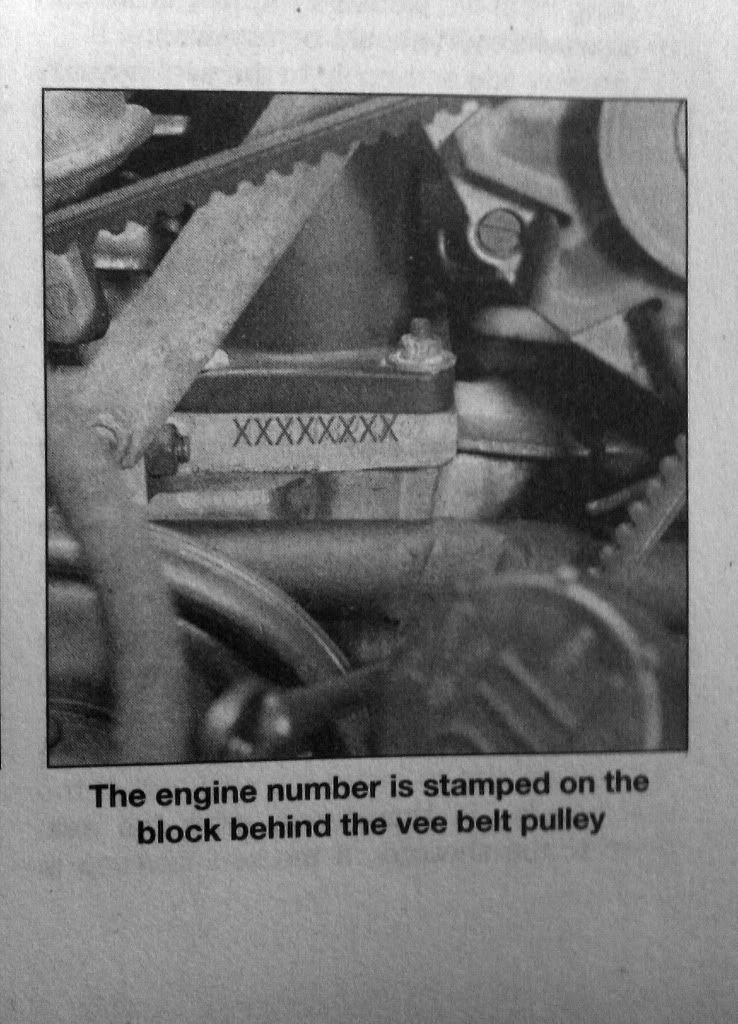Page 1 of 1
How to identify engine
Posted: 01 May 2013, 16:27
by badgerfax
Hi guys, not sure if i've posted in the wrong place
How can I identify my engine, Its a water cooled has 1880cc on the logbook.
The exhaust silencer has 2 flanges, 1 from either side so i'm guessing its classed as early?
Then I get stumped
Need to replace the exhaust pipe with the heat exchanger as this has rotted and the silencer that I got from Big Bang.
Any recommendations for a good penetrating oil to help me out
Thanks
Re: How to identify engine
Posted: 01 May 2013, 17:25
by kevtherev
1880 is wrong..
under the breather tower is your engine number with a suffix CU CT DG DF DJ or what ever..this denotes your engine type.
If it's not Aircooled then you do not need that heat exchanger... it's remnant from VW European standard.
Re: How to identify engine
Posted: 01 May 2013, 17:28
by Ralf85
Yep. Just below the oil filler pipe on the engine block.
Re: How to identify engine
Posted: 01 May 2013, 17:43
by kevtherev
On what Patrick?
On a DG DF DJ it's not
or do you mean if you look past it?

Re: How to identify engine
Posted: 01 May 2013, 17:50
by badgerfax
Thanks guys, I've just cleaned the area of grotty old oil and its a DG
So why the heat exchanger? I can see that the heater matrix up front will be warmed by the water.
The corrugated card/alli pipe from the exchanger is in 2 pieces so that's not doing much!
Seems to go to the air filter.
Can I get rid of this or do I need to replace. The actual exhaust part seems ok by feel but the outer casing of the exchanger is like swiss cheese without the cheese.
Re: How to identify engine
Posted: 01 May 2013, 19:18
by badgerfax
Bit gooey in there but found it

Re: How to identify engine
Posted: 01 May 2013, 19:43
by AdrianC
badgerfax wrote:So why the heat exchanger? I can see that the heater matrix up front will be warmed by the water.
The corrugated card/alli pipe from the exchanger is in 2 pieces so that's not doing much!
Seems to go to the air filter.
Sounds like a perfectly normal carb air pre-heater. In cold weather, intake air's pre-warmed by the exhaust, helping to reduce carb icing.
Re: How to identify engine
Posted: 01 May 2013, 19:57
by itchyfeet
WHS^^^
No hurry until next winter, if you don't use in winter then you may choose to leave it alone.
If you have a go Plusgas is what you need to help remove the exhaust stud nuts ( get it on ebay), if you snap them off you have much bigger problems.
Re: How to identify engine
Posted: 01 May 2013, 20:01
by kevtherev
most aftermarket exhausts come without this air warmer.
I have not missed mine for several years.
Re: How to identify engine
Posted: 01 May 2013, 20:02
by itchyfeet
^^^ I agree, mine was taken off by the LPG installer who said LPG does not need it, I run sometimes on petrol in winter and have no real problems.
Re: How to identify engine
Posted: 01 May 2013, 20:10
by badgerfax
Thanks for that, sorry not so good on mechanics, but keen to learn.
I think I will leave alone and just do the silencer, at least that way i know how much of a pig its gonna be to undo the nuts.
I have been looking into the penetrating fluid and have came across plusgas.
Some are going on about Liquid Wrench but that seems to be only in the US.
Quite like the idea of making up a homebrew acetone & transmission fluid, just to make life difficult for myself
Re: How to identify engine
Posted: 01 May 2013, 20:46
by kevtherev
plus gas... and a lot of heat
they will come off
Re: How to identify engine
Posted: 02 May 2013, 09:26
by Ian Hulley
There's always Loctite Freeze & Release, Plus Gas or getting up-close and personal with a small blow torch .... the idea is to break the bond which has formed between the components one way or another.
Re: How to identify engine
Posted: 02 May 2013, 20:23
by badgerfax
Got some Plusgas on the way to me. Gonna take my time and try and soak for a few days before I get the spanners out

